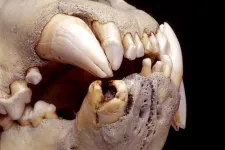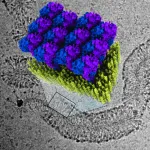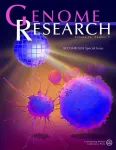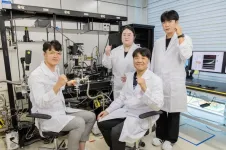(Press-News.org) By isolating and sequencing DNA in compacted hairs collected from the teeth of two Tsavo lion museum specimens from the 1890s, researchers have found that the historic lions from Kenya preyed on a variety of species, including humans, giraffes, and wildebeests. These so-called “Tsavo Man-Eaters” are estimated to have killed at least dozens of people, including those working along the Kenya-Uganda Railway in the late 1890’s. The findings appear in the Cell Press journal Current Biology on October 11.
“As biotechnologies advance, there are unexpected sources of knowledge, in this case genomics, that can be used to inform about the past,” says Ripan Malhi (@MalhiRipan) of the University of Illinois Urbana-Champaign. “Our results inform on the ecology and diet of lions in the past as well as on the impacts of colonization on life and land in this region of Africa.”
“A key part of this study was to create a method to extract and analyze DNA from single hairs of prey species found in the teeth of historical museum specimens,” says Alida de Flamingh (@adeflamingh), also at the University of Illinois Urbana-Champaign. “Our analysis showed that the historic Tsavo lions preyed on giraffe, human, oryx, waterbuck, wildebeest, and zebra, and we also identified hairs that originated from lions. This method can be used in many ways, and we hope other researchers will apply it to study prey DNA from other animal skulls and teeth.”
Study co-author Tom Gnoske at the Field Museum of Natural History in Chicago was the first to consider reconstructing the diet of these historic lions using prey hairs from their skulls, the researchers say. With collaborators in Kenya, he began to identify the hairs using microscopy. While conducting ancient DNA research on other animals at the Field Museum, the University of Illinois team got the idea to add genomics as a complementary approach to the study of those compacted hairs.
The Tsavo lions in the new study had dental injuries, including partially broken canine teeth exposing cavities where hair from their prey built up over time. From those tooth cavities, the researchers extracted DNA from individual hair shafts and tiny clumps of hair fragments. While the DNA in those samples was degraded in ways that are typical for historic or ancient DNA, they were able to piece enough of it back together in some of the samples to identify the species the hair originated from. They ultimately identified six prey species, including giraffe, human, oryx, waterbuck, wildebeest, and zebra.
The DNA data narrowed the giraffe sample down to a subspecies of Masai giraffe from southeast Kenya. The researchers also found Tsavo lion DNA that most closely matched other East African lions from Kenya and Tanzania. The researchers said they were most surprised to find hair from wildebeest, noting that it raises questions about their distribution in the past.
“It suggests that the Tsavo lions may have either traveled farther than previously believed, or that wildebeest were present in the Tsavo region during that time,” de Flamingh said. “The closest grazing area for wildebeest was over 50 miles from where the lions were killed in 1898 at the Tsavo-Athi confluence.”
The researchers say they are excited to explore the findings in even greater detail. For example, they suggest that the layered hairs can allow them to go back in time to reconstruct the lions’ diet at different ages. They suggest that such analysis may offer insight into human-lion conflicts that continue to impact communities in Africa, where lions may prey on wildlife as well as domestic animals and humans. The method also holds promise for studies of even older specimens.
“This methodology can potentially be used on hairs from broken teeth of more ancient carnivores from hundreds to thousands of years ago,” Malhi said. “The method opens up a new avenue of inquiry into the past.”
###
This work was supported by the US Department of Agriculture, USAID, and the University of Illinois Urbana-Champaign.
Current Biology, de Flamingh et al. “Compacted hair in broken teeth reveal dietary prey of historic lions” https://cell.com/current-biology/fulltext/S0960-9822(24)01240-5
Current Biology (@CurrentBiology), published by Cell Press, is a bimonthly journal that features papers across all areas of biology. Current Biology strives to foster communication across fields of biology, both by publishing important findings of general interest and through highly accessible front matter for non-specialists. Visit http://www.cell.com/current-biology. To receive Cell Press media alerts, contact press@cell.com.
END
Promising findings by researchers at Baylor College of Medicine and collaborating institutions could lead to the development of a non-invasive stool test and a new therapy for endometriosis, a painful condition that affects nearly 200 million women worldwide. The study appeared in the journal Med.
“Endometriosis develops when lining inside the womb grows outside its normal location, for instance attached to surrounding intestine or the membrane lining the abdominal cavity. This typically causes bleeding, pain, inflammation and infertility,” said corresponding author Dr. Rama Kommagani, associate professor in the Department of Pathology ...
About The Study: In this cross-sectional study of the U.S. population during the COVID-19 public health emergency, excess mortality occurred in all racial and ethnic groups, with disparities affecting several minoritized populations. The greatest relative increases occurred in populations ages 25 to 64. Documented differences deviated from pre-pandemic disparities.
Corresponding Author: To contact the corresponding author, Jeremy Samuel Faust, MD, MS, email jsfaust@bwh.harvard.edu.
To access the embargoed study: Visit our For The Media website at this link https://media.jamanetwork.com/
(doi:10.1001/jamanetworkopen.2024.38918)
Editor’s ...
Delft scientists discover how innate immunity envelops bacteria
The protein GBP1 is a vital component of our body’s natural defence against pathogens. This substance fights against bacteria and parasites by enveloping them in a protein coat, but how the substance manages to do this has remained unknown until now. Researchers from Delft University of Technology have now unravelled how this protein operates. This new knowledge, published in Nature Structural & Molecular Biology, could aid in the development of medications ...
[Vienna, October 11, 2024] – A new article highlights a critical issue in the One Health approach—an emerging global framework for tackling complex health challenges at the intersection of human, animal, and environmental health. In the article in The Lancet Planetary Health, scientists Amélie Desvars-Larrive and Fariba Karimi from the Complexity Science Hub (CSH) point out that One Health's current framework fails to explicitly address workforce diversity.
According to Desvars-Larrive and Karimi, ...
October 11, 2024 – Genome Research (https://genome.org) publishes a special issue highlighting novel advances in computational biology.
In collaboration with the International Conference on Research in Computational Molecular Biology (RECOMB), Genome Research publishes a collection of 20 computational methods and their applications in genomics including spatial, single-cell, and long-read sequencing. These include algorithmic innovations in genomic variation analysis, privacy-preserving algorithms, DNA structural properties, cancer genomics, ...
The research team led by Dr. Daeho Kim and Dr. Jong Hwan Park at the Nano Hybrid Technology Research Center of the Korea Electrotechnology Research Institute (KERI) has developed a groundbreaking process technology that enables for ultrafast, 30-second preparation of hard carbon anodes for sodium-ion batteries using microwave induction heating.
One of the next-generation secondary batteries, the sodium-ion battery uses sodium (Na) in lieu of the current mainstay, lithium (Li). Sodium, the main component of salt, is more than a thousand times more abundant than lithium and is easier to extract and refine. Furthermore, its lower reactivity compared ...
Astronomers have used the NASA/ESA James Webb Space Telescope (JWST) to observe the ‘inside-out’ growth of a galaxy in the early universe, only 700 million years after the Big Bang.
This galaxy is one hundred times smaller than the Milky Way, but is surprisingly mature for so early in the universe. Like a large city, this galaxy has a dense collection of stars at its core but becomes less dense in the galactic ‘suburbs’. And like a large city, this galaxy is starting to sprawl, with star formation accelerating in the outskirts.
This is the earliest-ever detection of inside-out galactic growth. ...
Scientists have identified a protein that blocks the activity of bone-forming cells (osteoblasts) by stopping them from maturing during the journey to sites of bone formation, a new study has found.
In a paper published in Communications Biology today (Friday 11 October 2024), a team of researchers led by Dr Amy Naylor and Professor Roy Bicknell along with their team including Dr Georgiana Neag from the University of Birmingham have found that protein CLEC14A, which is found on blood vessel cells called endothelial ...
A classical way to image nanoscale structures in cells is with high-powered, expensive super-resolution microscopes. As an alternative, MIT researchers have developed a way to expand tissue before imaging it — a technique that allows them to achieve nanoscale resolution with a conventional light microscope.
In the newest version of this technique, the researchers have made it possible to expand tissue 20-fold in a single step. This simple, inexpensive method could pave the way for nearly any biology lab to perform nanoscale imaging.
“This democratizes imaging,” says Laura Kiessling, the Novartis Professor ...
Novel magnetic nanodiscs could provide a much less invasive way of stimulating parts of the brain, paving the way for stimulation therapies without implants or genetic modification, MIT researchers report.
The scientists envision that the tiny discs, which are about 250 nanometers across (about 1/500 the width of a human hair), would be injected directly into the desired location in the brain. From there, they could be activated at any time simply by applying a magnetic field outside the body. The new particles could quickly find applications in biomedical research, and eventually, after sufficient testing, ...




